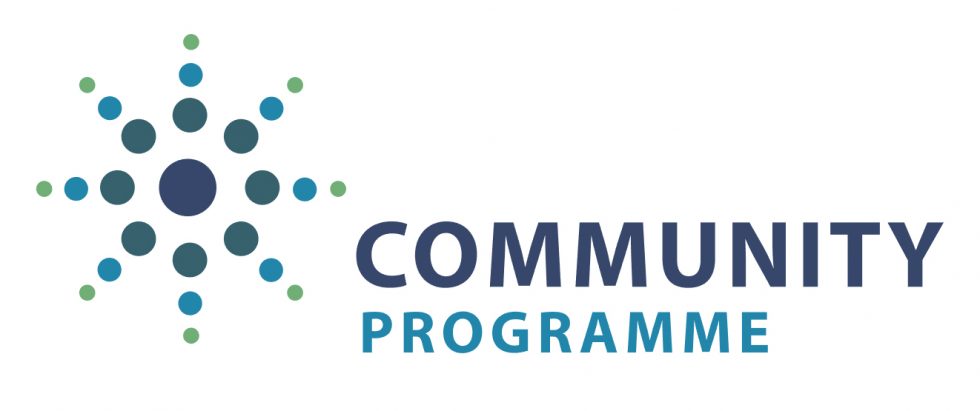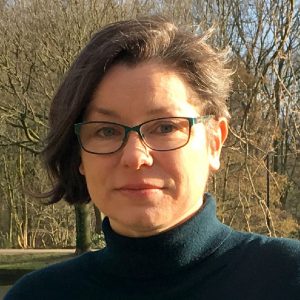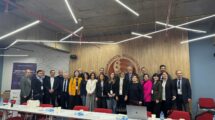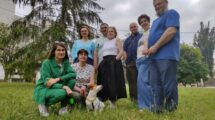TF-RED wants you! It’s a great time to join the GÉANT Task Force on Research Engagement Development. The group is creating a range of foundation materials and methodologies to facilitate the most effective use of available tools and technologies by research and education collaborations. Scientists, librarians, research support staff at universities, high-performance computing, e-infrastructures or NRENs – anyone from the wider R&E community with a relevant interest or role is welcome to explore, learn and contribute.

The first element in this framework is a ‘blueprint’ which can be used as advice or as a checklist. “If you’re new to the field you can read this for an overview of what research engagement is about, different ways to do it, and practical tips,” says Chris Atherton, Senior Research Engagement Officer within GÉANT and chair of TF-RED. “At a basic level, how do you determine who you need to talk to, what you are trying to achieve, how to segment the world of research so you can target specific groups of interest, and what kinds of things to take with you when you talk to them.” This blueprint document provides a step towards being able to validate research engagement teams through an accreditation process, which is a current topic of discussion in the group.
Another significant element is to agree a common model for the ‘research data lifecycle’. This will clarify the number of steps in the lifecycle and allow TF-RED to map which current NREN services support which steps, and where gaps could be filled – which could lead to new work in future iterations of the GÉANT Project (currently GN4-3). This focus on the research data lifecycle is being pursued in close cooperation with RDA (Research Data Alliance). Developing a relationship with RDA, as well as with library communities, was part of the TF-RED strategic plan. By participating in RDA events, TF-RED members are not only contributing to co-creation activities there, they are building bridges between the two communities.
A second route through which TF-RED is building dialogue with RDA is ‘the data movement challenge’. “Data movement is so ubiquitous it just happens in the background and the NREN world is not well known or understood by some researchers. Although the network connectivity is there, it’s not always optimised for the new types of science flows we’re seeing now, especially big data flows,” explains Chris. “Apart from the big research projects, we don’t have an easy, seamless way for researchers to use the network to move data from data-generating sources to their storage and compute infrastructures. Unless you understand the network, it’s difficult to get the best possible performance. We want to look at integrating networks and data movement into the storage and processing systems, and assist in the underlying infrastructure, without everyone who uses it having to be a network engineer.”
A further challenge to this line of enquiry is the integration of national R&E networks with other infrastructures and elements such as Cloud computing, storage and high-performance computing (HPC). “We have always focused on the underlying IT telecoms infrastructure, but want to look at links between the IT side and the research lifecycle side through the lens of HPC, especially now that the EuroHPC project is coming on stream,” says Chris. “How will researchers use HPC facilities and the underlying IT infrastructures for it all to link in and work together?” To help explore this aspect, Chris is particularly keen to attract people with HPC backgrounds to join TF-RED and its work in the relevant RDA group.
In discussing how best to tackle the data movement challenge, an idea was born. Published as a white paper earlier this year, the idea is to create a semi-production environment where research groups could perform science experiments while the NREN community implements lab-developed data movement technologies to move data between the different data-generating, storage and compute equipment. By controlling this facility as a community, NRENs would gain a real understanding of needs at a practical level and be able to tackle the challenges – particularly for smaller research groups – helping to integrate research data movement into different scientific workflows. Although this facility is only a concept, publication of the white paper has resulted in some enquiries from researchers who are keen to try.
If you wish to discuss these challenges and develop research engagement with TF-RED, the mailing list is open all year round!
For further information please visit the webpages of TF-RED and the Blueprint
This article is featured on CONNECT38! Read or download the full magazine here







